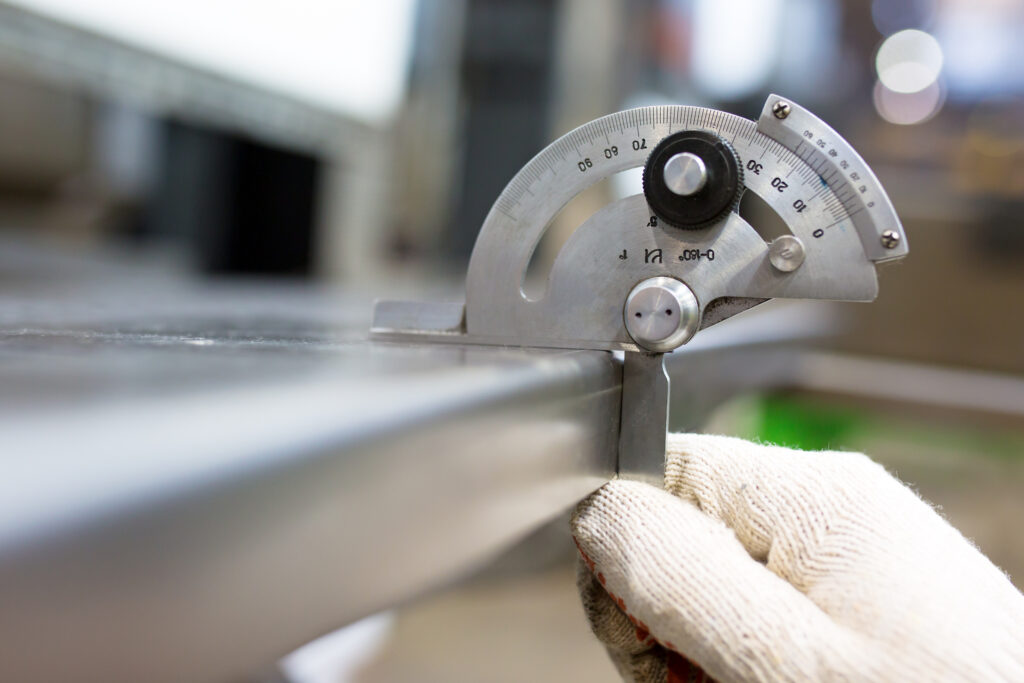Metal Sheet Fabrication
How Metal Fabrication Shapes Our World, One Piece at a Time

Metal fabrication isn’t just an industrial process; it’s the skilled craftsmanship that builds the foundations of our modern world. It’s the art of shaping raw metal into structures, components, and parts through a series of steps that involve cutting, bending, and assembling. In this blog, we’re going to dive into the fascinating world of metal fabrication. We’ll explore the processes it includes, its crucial role in a range of industries, and why it’s such a big deal in today’s manufacturing scene.
The Steps in Metal Fabrication
Think of metal fabrication as a series of hands-on steps, each bringing us closer to creating something amazing:
1. Cutting: Imagine a sculptor starting with a raw block of stone. In metal fabrication, we begin by cutting metal into the right shapes and sizes. This can be done using various tools like saws, lasers, or even plasma cutters.
2. Bending: Just like an artist molding clay, we may need to bend or shape metal pieces to fit the design. Think of press brakes as the sculptor’s hands gently molding the metal.
3. Machining: For those intricate details, we turn to machining. It’s like adding fine touches to a piece of art. Milling, drilling, and turning machines help us get those perfect dimensions.
4. Welding: Now comes the moment where we join pieces together, like an artist adding layers to a masterpiece. Welding is where the magic happens, creating strong, durable connections.
5. Assembling: Imagine putting together a puzzle. In metal fabrication, we assemble all the pieces into the final product. This might involve bolts, rivets, or a touch of adhesive, depending on the project.
6. Finishing: Just as an artist might add a coat of varnish, metal fabrication products get finishing touches. Sandblasting, powder coating, and painting help enhance durability and appearance.
Why Metal Fabrication Matters

1. It’s Adaptable: Metal fabrication can create parts for countless industries, from building construction to cutting-edge aerospace technology. Its adaptability makes it invaluable.
2. Precision Matters: In today’s world, precision is everything. Whether it’s for a skyscraper or a microchip, metal fabrication ensures that every piece fits perfectly.
3. Custom Solutions: Metal fabrication can be tailored to specific needs. This means engineers and designers can come up with unique solutions for complex problems.
4. Cost-Effective: Efficient metal fabrication processes can significantly cut production costs. This is a game-changer for large-scale manufacturing.
5. Built to Last: Metal is known for its strength and durability. Fabricated metal products can take a beating and still perform, making them perfect for long-lasting applications.
Industries That Rely on Metal Fabrication
A wide range of industries depends on metal fabrication to bring their visions to life:
1. Construction: Buildings, bridges, and infrastructure projects rely on metal fabrication for structural components.
2. Automotive: Whether it’s a car’s chassis or engine parts, the automotive industry is a big fan of metal fabrication.
3. Aerospace: Precision and reliability are crucial in aerospace. Metal fabrication is key to manufacturing aircraft and spacecraft.
4. Manufacturing: Metal fabrication supports the production of machinery, equipment, and everyday products.
5. Energy: The energy sector relies on metal fabrication for pipelines, power generation equipment, and renewable energy systems.
6. Electronics: The housings and components of electronic devices often incorporate metal fabricated parts.
7. Medical: From diagnostic devices to surgical instruments, metal fabrication is part of the medical world’s toolkit.
In a nutshell, metal fabrication is more than a process; it’s an essential part of how we create and build in the modern world. It’s the craftsmanship that turns raw metal into everything from towering skyscrapers to life-saving medical equipment. It’s the art and science of shaping our world, one piece at a time.
